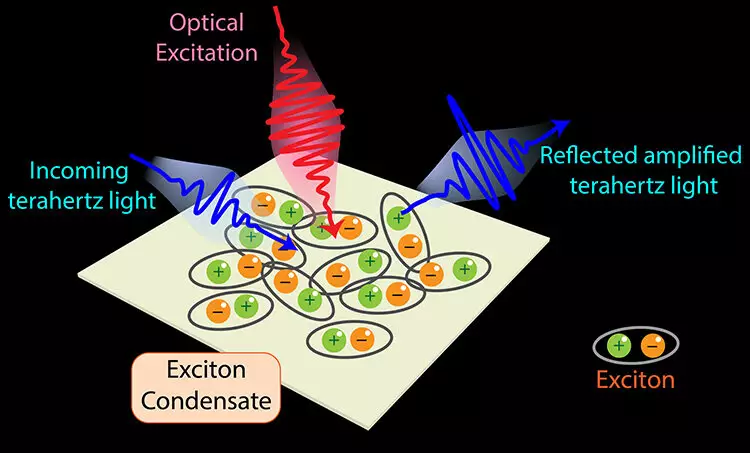In the vast field of material science, certain materials possess hidden properties that are often difficult to uncover. However, scientists at the University of California San Diego have recently made significant progress in revealing these properties using an advanced optical technique. By shining light on a quantum material called Ta2NiSe5 (TNS), they were able to observe intriguing phenomena that were previously concealed. This groundbreaking research, published in Nature Materials, has the potential to revolutionize the understanding and manipulation of quantum materials.
Unveiling Hidden Properties with Light
Traditionally, materials are perturbed using external stimuli such as changes in temperature or pressure. However, light, being the fastest thing in the universe, allows for rapid response and the revelation of concealed properties. Professor of Physics Richard Averitt, who led the research, explains that by using light, they can employ a stop-action photography-like approach to incrementally follow a property of the material. This method enables scientists to understand the intricate movements of constituent particles within the system, ultimately exposing elusive properties that are otherwise challenging to detect.
Lead author Sheikh Rubaiat Ul Haque and his colleagues developed an innovative technique called terahertz time-domain spectroscopy to investigate the properties of TNS. By measuring the material’s properties over a broad range of frequencies, Haque’s improvements to the technique provided access to a more extensive spectrum of information. This advancement allowed the researchers to delve deeper into the optical properties of TNS and unlock its hidden mysteries.
The research was built upon the theoretical framework introduced by Eugene Demler, a professor at ETH Zürich, and his graduate student Marios Michael. Demler and Michael proposed the idea that certain quantum materials, when stimulated by light, can transform into a medium that amplifies terahertz frequency light. Intrigued by this theory, Haque and his colleagues decided to scrutinize the optical properties of TNS. They collaborated with Angel Rubio’s group at the Max Planck Institute for the Structure and Dynamics of Matter, utilizing density functional calculations to validate their experimental findings.
Revealing the Exciton Condensate
The team’s observations centered around the behavior of excitons, which are produced when an electron is excited to a higher level by a photon, resulting in the formation of a hole. When the electron and hole are bound together, an exciton is created. The researchers hypothesized that excitons could potentially form a condensate, a unique quantum state in which particles behave as a single entity. Haque’s technique, supported by Demler’s theory and the meticulous calculations conducted by Rubio’s group, allowed the team to detect anomalous terahertz light amplification. This groundbreaking revelation uncovered some of the hidden properties of the TNS exciton condensate.
Implications for Quantum Materials and Light Sources
The ability to imprint quantum properties onto light is a significant achievement enabled by this spectroscopic technique. This breakthrough has promising implications, particularly in the emerging field of entangled light sources, where multiple light sources possess interconnected properties. Haque, looking forward to the future, stated that Demler’s theory can be applied to a wide range of other materials with nonlinear optical properties. Thus, this research opens up new opportunities for understanding and manipulating quantum materials using light.
The research conducted at the University of California San Diego has successfully utilized light to uncover the hidden properties of the quantum material TNS. Through the continuous advancement of optical techniques, scientists can delve deeper into the realm of quantum materials and gain insight into their intricate properties. The revelation of the TNS exciton condensate and the potential imprinting of quantum properties onto light mark an exciting chapter in material science. This groundbreaking research paves the way for future discoveries and advancements, promising a new era of understanding and harnessing the power of quantum materials.



Leave a Reply